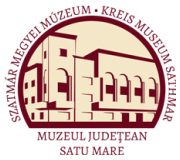Marta, Liviu: The Late Bronze Age Settlements of Petea-Csengersima (Satu Mare, 2009)
VI. Annexes
Almost all skull elements preserved artificial alterations, especially cutting marks, which attested that they were used for alimentary purposes. The presence of skull elements might refer to the same aspect: either they were remains of cooked specialities (cerebrum, tongue), or they were simply waste. Thanks to these information, the pit can be categorized as one specifically used for 'food waste'. Complex 189: This complex uncovered a relatively great variety of animal bones. All could be defined, and those which could not (40 pieces of splinters and the 'bone powder') probably originated from other elements in the pit.-Bos taunts-. 3 molar fragments; 3 fragments of humerus that originated from at least 2 different individuals; a fragment of a radius; a calcaneus bone of a subadultus; an astragalus; a fragment of a broken metatarsus (those 3 elements did not match anatomically);-Sus scrofa-. one tooth and 2 fragments of a right side mandible; according to size and condition, they might be fragments of the same element;-Ovicapra-. a fragment of a humerus; 3 molars, they probably belonged to the same individual; -Equus caballus-. one left inferior tooth; a praemaxilla; a fragment of a radius; a fragment of a metapodium; an astragalus; a phalanx;-Canis familiáris-, a skull with completely desintegrated mandibles, which might have been complete at the moment of the excavation, but probably broke while cleaned — when opening the box, there were only splinters, bone powder and teeth noticeable, the latter were more or less well preserved. It seemed that the pit uncovered at least 2 complete or fragmentary skulls: a pig’s and a dog’s. The elements that originated from a horse were specific to the 'not used' elements in nourishment (but not entirely inconsumable!). In the case of Bovidae, most of the elements can be categorized as the best quality meat.736 No elements showed artificial alterations. Complex 514: Pit with a great variety of species with many post-cranial elements.-Bos taurus-. a skull? splinter, a premolar, a fragment of an atlas, a radius fashioned into tool (pic. 1), a gnawed pelvic bone, a tibia bone that was probably boiled, and a tibia bone without artificial marks, a fragment of humerus, an astragalus and an incomplete metatarsus;-Sus scrofa-. a fragment of a maxilla, a gnawed humerus;-Ovicapra-. a fragment of a gnawed metatarsus, 2 fragments of tibia — one originated from a young animal;-Equus caballur. 2 rib fragments, one from area IX, the other from area XII, both belonged to adults; a pelvis fragment; an incomplete mandible of an adult male; and a gnawed, secondary metapodium;-Canis familiáris-, a tibia fragment and a gnawed mandible of an adult that belonged to a short/medium size breed;- large mammals: 4 diaphysis splinters, 2 splinters of cut diaphysis, one splinter of a cut flat bone, 2 cut splinters of femoral diaphysis;-medium size mammals: 4 diaphysis splinters; With the same degree of preservation, there was a high variety of bones, and even a processed bone occured. Most bones were related to best quality meat. The presence of the processed bone, of horse and dog bones (some of them gnawed) indicated the function of a domestic pit of a house/dwelling with specific function, rather than an occasional ‘food waste’ pit. Bos taurus (cattle). Bovidae represented 37,11% of the osteological material and 56,23% of the defined material. The majority of the undefined fragments originated from tall stature animals, 736After to Uerpmann (1973) 183
